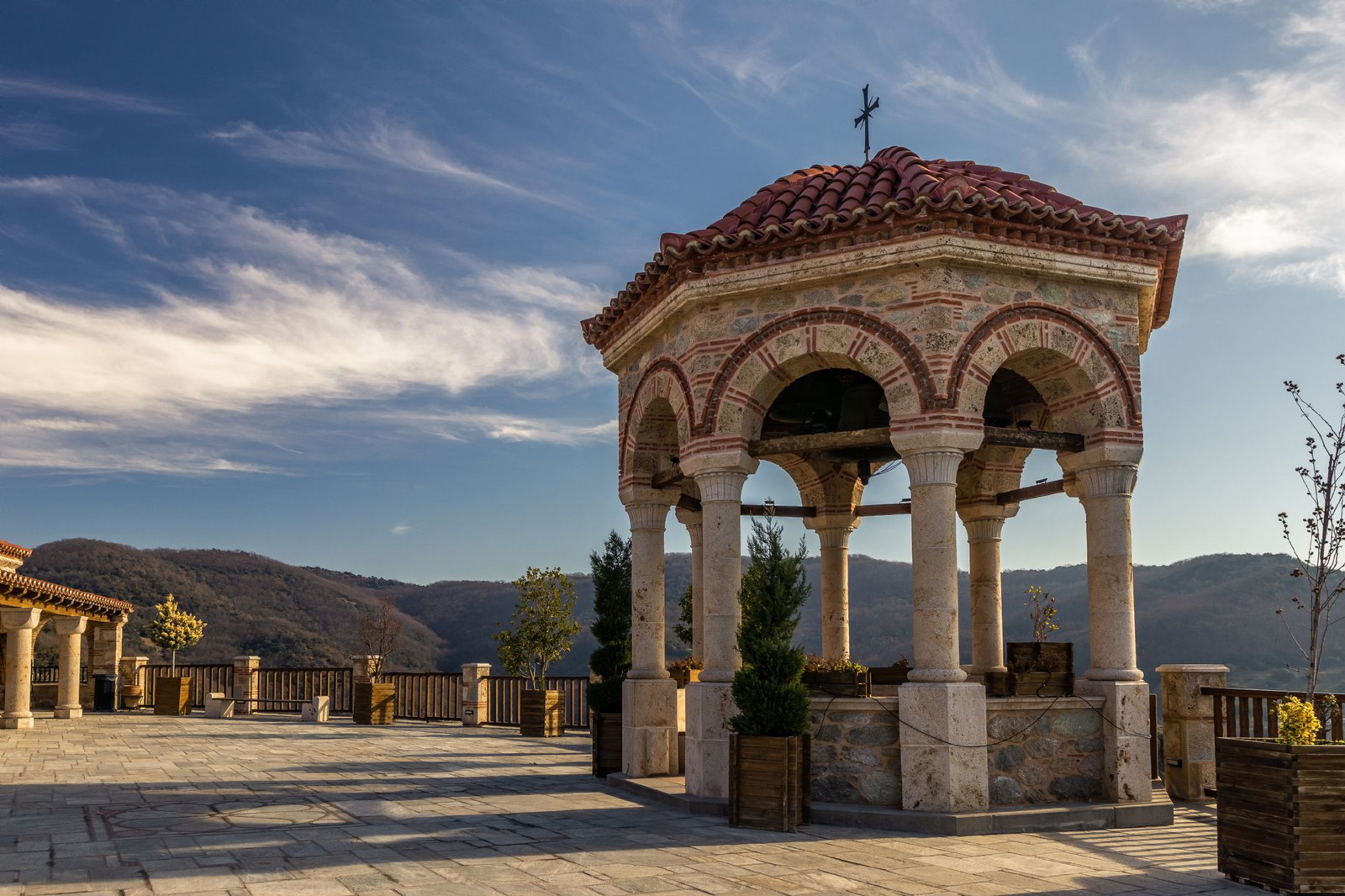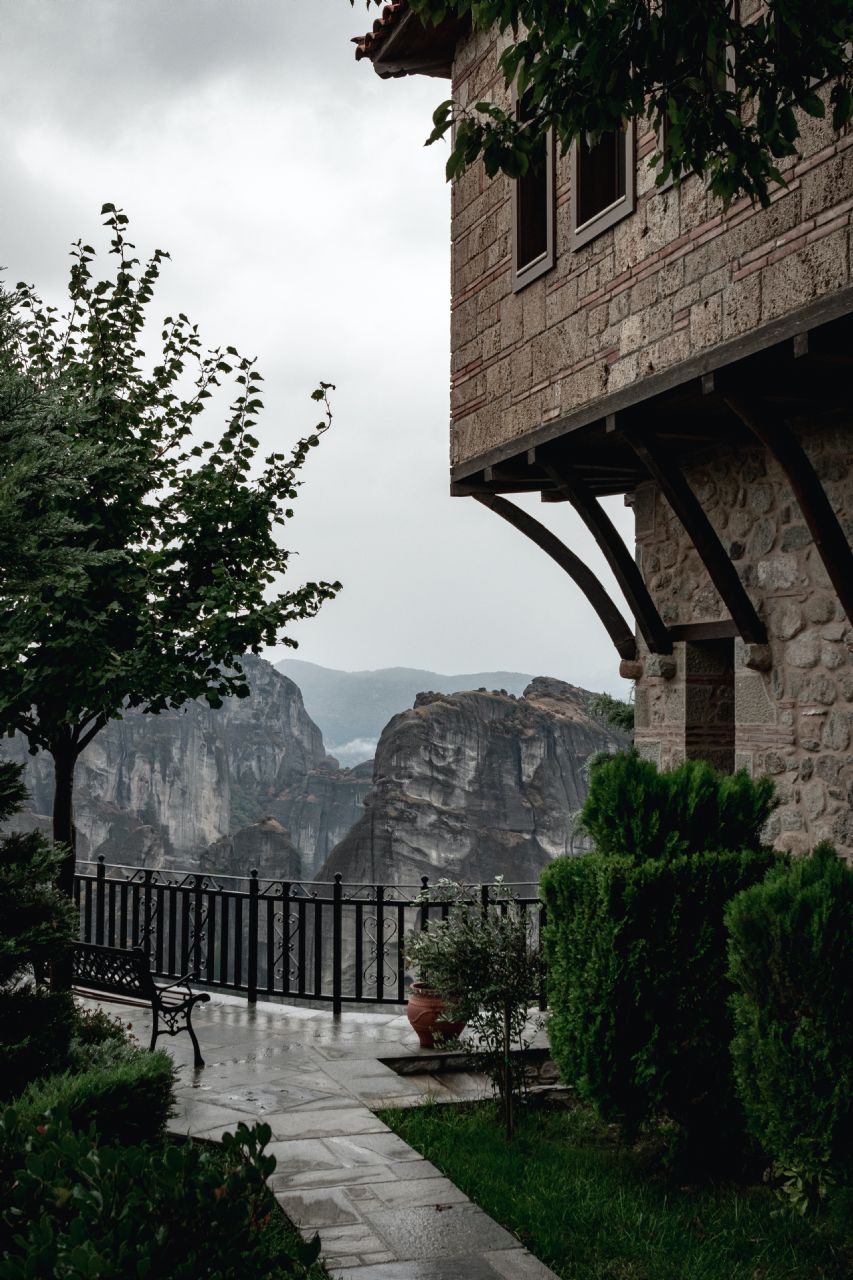
Meteora: Nature and spirituality unite in Greece's captivating destination.
Meteora, with its awe-inspiring suspended monasteries, holds a special place in the hearts of travelers seeking a unique cultural and spiritual experience. Located in the northwestern region of Greece, Meteora is a captivating destination that combines natural beauty with a rich historical and cultural heritage. In this blog post, we will delve into the enchanting world of Meteora, exploring its location, transportation options, general history and culture, activities to be enjoyed, available accommodations, the best time to visit, and essential tips for a memorable journey.
-
Where is Meteora?
Meteora is situated in the Thessaly region of central Greece, near the town of Kalambaka. Thessaly is one of the thirteen administrative regions of Greece and is known for its diverse landscapes, including mountains, plains, and coastal areas. The region is bordered by the Pindus Mountains to the west and the Aegean Sea to the east.
Meteora itself is a geological wonder characterized by towering rock formations. These colossal sandstone and conglomerate pillars were formed millions of years ago through a combination of tectonic activity, weathering, and erosion. The rocks vary in shape and size, with some reaching heights of up to 400 meters (1,300 feet).
The name "Meteora" translates to "suspended in the air" or "in the heavens above." This name is fitting, as the rock formations appear to defy gravity, creating a truly awe-inspiring sight. Perched atop these towering cliffs are the famous monasteries of Meteora, which have become iconic symbols of the region.
The monasteries of Meteora were constructed by monks seeking spiritual isolation and an escape from worldly distractions. Access to the monasteries was initially challenging, requiring rope ladders and baskets to transport people and supplies. Over time, steps were carved into the rock, making it somewhat easier to reach these remote havens. Today, visitors can explore several of the monasteries, each offering a unique glimpse into the region's spiritual and cultural heritage.
The natural beauty of Meteora is further enhanced by the lush greenery that surrounds the rocks. Pine forests, meandering rivers, and blooming wildflowers create a picturesque setting that complements the grandeur of the rock formations. The entire area is a haven for outdoor enthusiasts, offering opportunities for hiking, rock climbing, and photography.
To reach Meteora, visitors often fly into Thessaloniki International Airport, which is the closest major airport. From there, they can either rent a car or take a bus to Kalambaka, the town located at the foot of Meteora. The journey from Thessaloniki to Kalambaka takes approximately three hours by car or bus. Additionally, there are train connections from Athens to Kalambaka, with a travel time of around four to five hours.
Meteora's unique combination of geological wonders, spiritual heritage, and natural beauty make it a truly extraordinary destination. Whether you're interested in history, spirituality, outdoor adventures, or simply immersing yourself in awe-inspiring surroundings, Meteora offers an unforgettable experience that will leave you with lasting memories.

-
How to Get to Meteora:
Air and Train Travel Options Travelers have two main options for reaching Meteora: by air and by train. The closest airport is Thessaloniki International Airport, which is well-connected to major European cities. From the airport, you can either rent a car or take a bus to Kalambaka, the nearest town to Meteora. Alternatively, you can take a train from Athens to Kalambaka, enjoying scenic views along the way.
- By Air: The closest major airport to Meteora is Thessaloniki International Airport (SKG). From the airport, you have a couple of options:
- Rent a Car: Car rentals are available at the airport, and it is a convenient way to reach Meteora. The journey from Thessaloniki to Kalambaka takes approximately 3 hours by car. The average cost of car rental varies depending on the vehicle type and rental duration.
- Bus: Buses operate from Thessaloniki Airport to Kalambaka. The journey takes around 3 to 3.5 hours, and tickets cost approximately €20-€25 (one way).
-
By Train: If you prefer traveling by train, you can take a train from Athens to Kalambaka. The Athens to Kalambaka train route is serviced by Greek Railways (TrainOSE). The journey takes approximately 4-5 hours, depending on the train type. The average cost for a one-way ticket is around €20-€30.
-
By Bus: There are direct bus connections to Kalambaka from various cities in Greece, including Athens and Thessaloniki. Bus services are operated by KTEL, the national bus service provider. The journey from Athens to Kalambaka takes around 5-6 hours, while from Thessaloniki, it takes approximately 3-4 hours. The bus ticket prices vary depending on the departure city, but they typically range from €20-€35 (one way).
-
Local Transportation: Once you arrive in Kalambaka, the town at the base of Meteora, you can easily reach the monasteries and explore the area:
- Walking: If you're up for some exercise, you can walk from Kalambaka to the monasteries. The distance between the town and the monasteries is approximately 2-3 kilometers (1-2 miles).
- Taxi: Taxis are available in Kalambaka, and you can hire one to take you to the monasteries. The cost will depend on the distance and duration of the trip, but it is generally reasonable.

Please note that the mentioned costs are approximate and can vary based on factors such as the time of year, travel class, and any promotions or discounts available at the time of booking. It's always a good idea to check current prices and availability before making travel arrangements.
Meteora is undoubtedly worth the journey, and the transportation options offer different experiences, allowing you to choose the one that suits your preferences and budget. Enjoy your trip to this magical destination!
-
The General History and Culture
of Meteora Meteora's history dates back to the 11th century when monks seeking spiritual isolation and tranquility started settling in the area. Over time, they constructed monasteries atop the towering rock formations. The monasteries served as centers of religious devotion and safeguarded precious religious artifacts. Today, these monasteries provide visitors with a glimpse into the region's religious and cultural heritage.
-
Activities to Enjoy in Meteora
-
Explore the Monasteries: A visit to the monasteries is a must-do activity in Meteora. You can explore the active monasteries that are open to the public and gain insight into the region's spiritual heritage. Admire the intricate frescoes, ancient artifacts, and stunning views from the monastic perches. Each monastery has its own distinct character and history, offering a fascinating glimpse into the monastic life.
-
Hiking and Nature Walks: Meteora's unique geological formations and surrounding landscapes provide excellent opportunities for hiking and nature walks. There are several well-marked trails that take you through scenic routes, allowing you to immerse yourself in the natural beauty of the area. From gentle strolls to more challenging hikes, you can choose a trail that suits your fitness level and interests. Don't forget to bring your camera to capture the breathtaking views along the way.
-
Rock Climbing: For adventure enthusiasts, Meteora offers excellent rock climbing opportunities. The towering rock pillars provide a thrilling challenge for climbers of various skill levels. Whether you're a beginner or an experienced climber, you can find routes suited to your abilities. Local climbing guides and instructors are available to assist and ensure your safety as you scale the vertical cliffs.
-
Photography: Meteora is a paradise for photographers, offering countless opportunities to capture awe-inspiring shots. From the iconic monasteries perched on the cliffs to the panoramic vistas of the surrounding landscape, every corner of Meteora is a potential photographic masterpiece. The changing light throughout the day and the interplay of shadows and textures create a dynamic canvas for your creativity. Be sure to bring your camera equipment and unleash your inner artist.
-
Sunset and Sunrise Views: Witnessing the sunrise or sunset in Meteora is a magical experience. The ethereal light casts a golden glow on the rock formations, creating a surreal and captivating atmosphere. Several viewpoints, such as the Great Meteoron Monastery or the Doupiani rock, offer breathtaking panoramic vistas. Plan your visit accordingly to savor these moments of natural beauty and tranquility.
-
Cultural Experiences: Immerse yourself in the local culture by attending cultural events and festivals in Meteora. Keep an eye out for traditional music and dance performances, art exhibitions, and celebrations that showcase the region's rich heritage. Engaging with the local community and participating in cultural activities can deepen your understanding and appreciation of the area.
Remember to respect the rules and regulations of the monasteries, follow designated hiking trails, and practice responsible tourism by leaving no trace. Enjoy the diverse range of activities in Meteora and create memories that will last a lifetime.

-
Accommodations in Meteora Meteora
offers a range of accommodations to suit different budgets and preferences. From luxury hotels nestled amidst the cliffs to cozy guesthouses in the nearby town of Kalambaka, there are options for every traveler. Staying in a traditional guesthouse can provide an authentic experience, with warm hospitality and a chance to savor local cuisine.
-
Best Time to Visit Meteora
Meteora can be visited year-round, but the best time to go depends on personal preferences. Spring (April to June) and autumn (September to October) offer pleasant weather and fewer crowds, making it ideal for hiking and exploring the monasteries. Summer (July to August) is the peak tourist season, with vibrant festivals and longer daylight hours. Winter (November to March) offers a serene atmosphere, and if you're lucky, you might witness the cliffs covered in a beautiful blanket of snow.
-
Essential Tips for a Meteora Journey
- Dress modestly when visiting the monasteries out of respect for their religious significance.
- Wear comfortable shoes for hiking and exploring the rocky terrain.
- Carry a reusable water bottle to stay hydrated during your outdoor activities.
- Check the opening hours of the monasteries in advance, as they have specific visiting hours and days.
- Be mindful of the rules and regulations within the monasteries, such as restrictions on photography and speaking softly.

A journey to Meteora is an unforgettable experience that combines natural wonders, cultural heritage, and a sense of tranquility. From the suspended monasteries perched atop towering rocks to the breathtaking landscapes, Meteora offers a unique destination that will leave you with lasting memories. Whether you're a history enthusiast, a nature lover, or a seeker of spiritual enlightenment, Meteora promises to captivate your senses and transport you to a world where earthly and divine realms intertwine.


 Hello! I'm Michael, a 30-year-old travel enthusiast. I have a deep passion for exploring new places, experiencing different cultures, and embarking on thrilling adventures. Through my travels, I've gained valuable insights and helpful tips that I love sharing with fellow travelers. Join me on Touristify.live as I take you on a journey of discovery, providing unique perspectives and inspiring travel experiences. Let's create unforgettable memories together and explore the world one destination at a time!
Hello! I'm Michael, a 30-year-old travel enthusiast. I have a deep passion for exploring new places, experiencing different cultures, and embarking on thrilling adventures. Through my travels, I've gained valuable insights and helpful tips that I love sharing with fellow travelers. Join me on Touristify.live as I take you on a journey of discovery, providing unique perspectives and inspiring travel experiences. Let's create unforgettable memories together and explore the world one destination at a time!